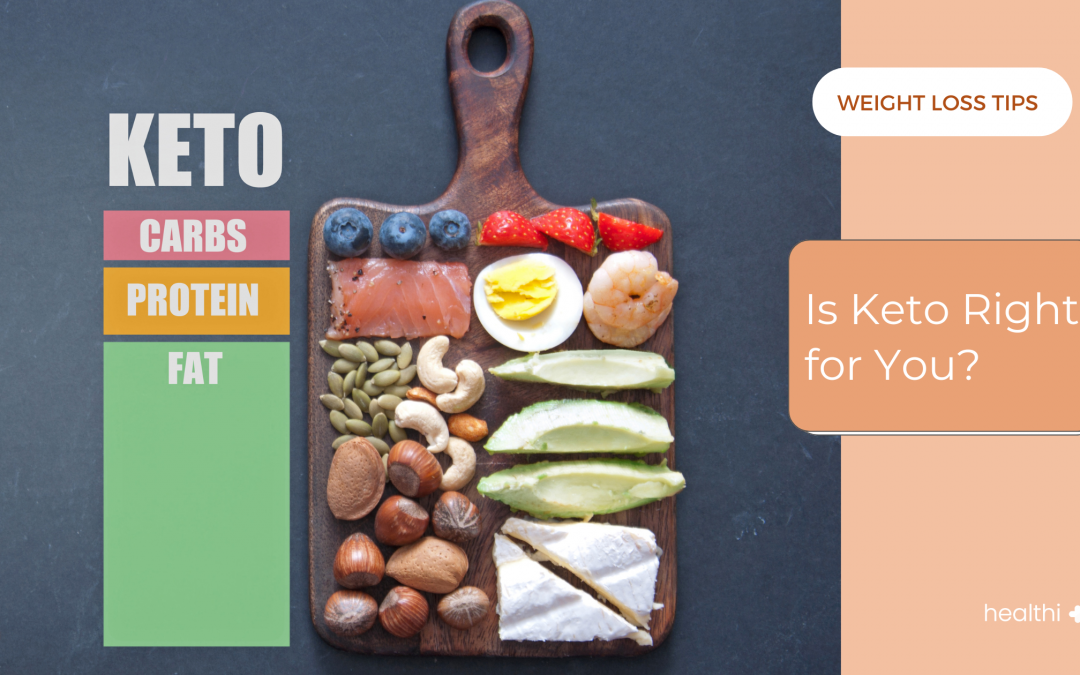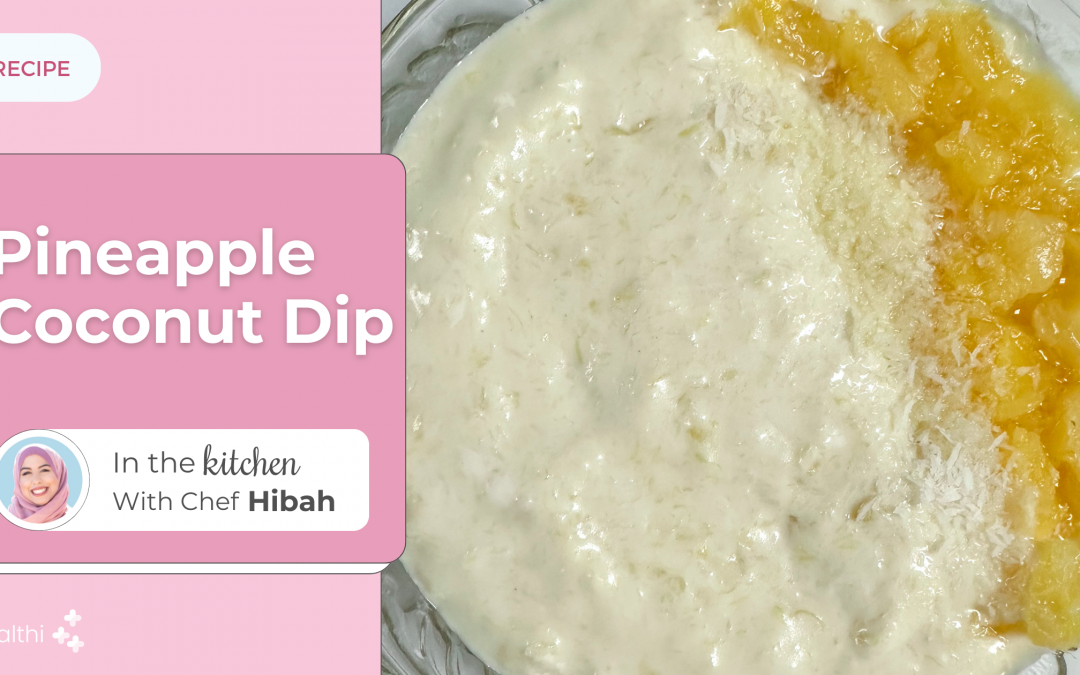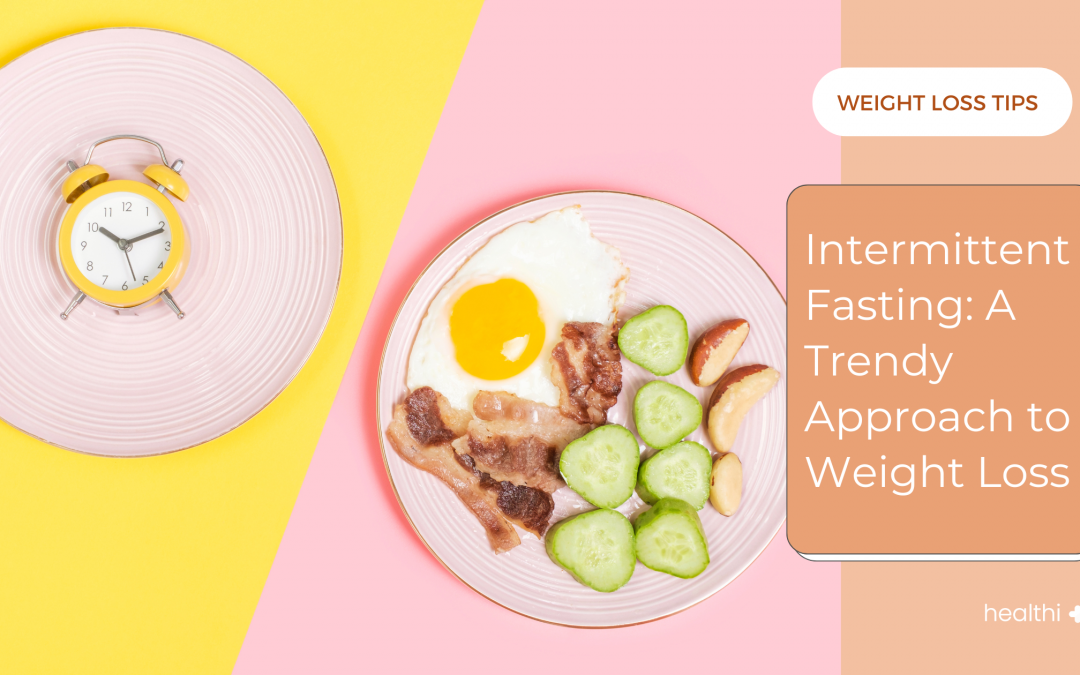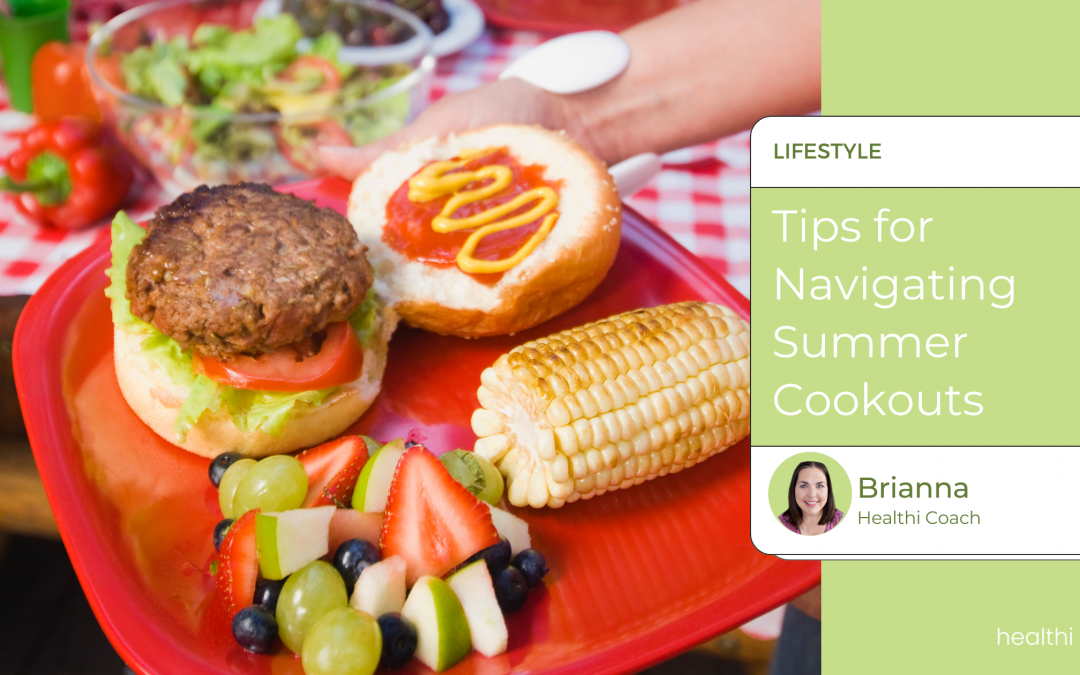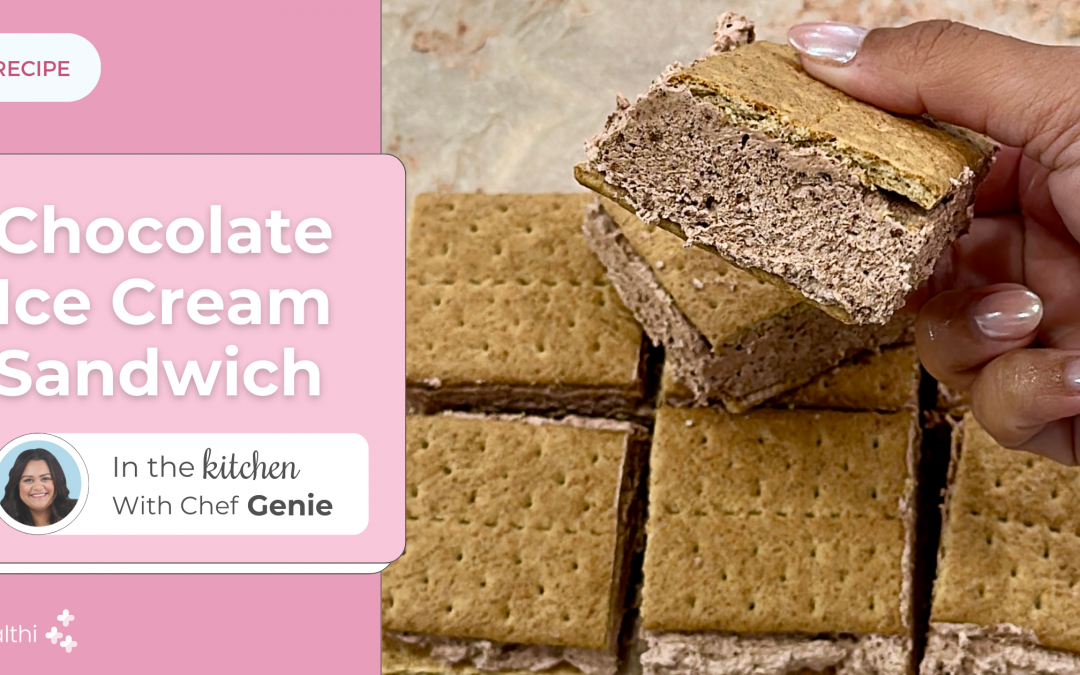The Ultimate Guide to Healthy Eating: Tips and Tricks for a Balanced Diet
Maintaining a balanced diet is an essential aspect of leading a healthy life. Eating a healthy diet has numerous benefits, including improving your energy levels, boosting your immunity, and reducing your risk of developing chronic diseases. However, with so much conflicting information available online, it can be challenging to know where to begin. In this article, we will provide you with tips and tricks for healthy eating that will help you achieve a balanced diet and optimize your overall health.
Overview:
- What is healthy eating?
- The importance of each food group
- What is a balanced diet?
- Sample balanced diet
- Beginning your journey
- Benefits of a balanced diet
- Tips and tricks to follow for a balanced diet
- How to stick to a balanced diet
- Leveraging the Healthi app
- Precautions
- Conclusion
What is healthy eating?
Healthy eating is a dietary pattern that involves consuming a balanced and nutritious diet consisting of various foods from different food groups, including whole grains, fruits, vegetables, lean proteins, healthy fats, and low-fat dairy products. It involves limiting or avoiding highly processed and sugary foods, as well as reducing the intake of saturated and trans fats, sodium, and cholesterol.
Healthy eating is vital for weight loss in women because it can help create a calorie deficit, which is essential for losing weight. When a person consumes fewer calories than they burn, their body is forced to burn stored fat for energy, resulting in weight loss. Additionally, healthy foods are often more filling and satisfying than processed and high-calorie foods, so they can help reduce hunger and cravings, making it easier to stick to a reduced-calorie diet.
Eating a healthy diet can also provide numerous health benefits beyond weight loss, including reduced risk of chronic diseases such as heart disease, type 2 diabetes, and certain types of cancer, improved digestion and gut health, and better mental health and cognitive function.
The importance of each food group
Each food group provides essential nutrients that are important for overall health and can play a role in weight loss. Here is a breakdown of the importance of each food group:
- Fruits and vegetables are low in calories and high in fiber, vitamins, minerals, and antioxidants. They can help fill you up without contributing too many calories, making them an important part of a weight-loss diet. Aim for a variety of colorful fruits and vegetables to ensure that you are getting a range of nutrients.
- Whole grains are a good source of fiber, which can help keep you feeling full and satisfied. They also provide important nutrients like B vitamins, iron, and magnesium. Choose whole-grain bread, pasta, and cereal instead of refined grains to increase your fiber intake and improve your overall nutrition.
- Protein is important for building and repairing muscle tissue and can help keep you feeling full and satisfied. Choose lean proteins like chicken, fish, turkey, tofu, beans, and lentils to minimize your intake of saturated fat.
- Healthy fats (unsaturated fats) like those found in nuts, seeds, avocados, and olive oil can help improve your overall health and keep you feeling satisfied. However, be mindful of your portion sizes as fats are high in calories.
- Dairy products like milk, yogurt, and cheese are important sources of calcium and vitamin D, which are important for bone health. Choose low-fat or non-fat versions to limit your intake of saturated fat.
It is important to remember that each food group plays a unique role in providing the nutrients your body needs for optimal health. A balanced diet that includes a variety of nutrient-dense foods from each food group can help support weight loss and improve overall nutrition.
What is a balanced diet?
A balanced diet for women should consist of a variety of nutrient-dense foods from each of the five food groups: fruits, vegetables, whole grains, lean proteins, and healthy fats. Here’s a breakdown of each food group and how much you should aim to include in your diet:
- Fruits and vegetables: Aim to eat at least five servings of fruits and vegetables each day. Choose a variety of colorful fruits and vegetables to ensure that you are getting a range of nutrients. Examples include leafy greens, berries, citrus fruits, carrots, broccoli, and bell peppers.
- Whole grains: At least half of your daily grain intake should come from whole grains like whole wheat bread, brown rice, and quinoa. Choose whole-grain versions of your favorite foods like pasta and cereal to increase your fiber intake.
- Lean proteins: Aim to eat lean proteins like chicken, fish, turkey, tofu, beans, and lentils at every meal. Choose grilled, baked, or broiled versions to minimize your intake of saturated fat.
- Healthy fats: Include healthy fats like those found in nuts, seeds, avocados, and olive oil in your diet in moderation. A good rule of thumb is to aim for one to two servings of healthy fats per meal.
- Low-fat dairy: Include low-fat or non-fat dairy products like milk, yogurt, and cheese in your diet to ensure that you are getting enough calcium and vitamin D.
In addition to these food groups, it is important to limit your intake of highly processed foods, sugary beverages, and foods high in saturated and trans fats. Drink plenty of water throughout the day to stay hydrated and choose low-calorie beverages like unsweetened tea or coffee.
Overall, a balanced diet for women should be rich in a variety of nutrient-dense foods to support overall health and wellness. Consulting a registered dietitian can help you create a personalized meal plan that meets your individual needs and goals. In addition to this, you can utilize the Healthi app that can generate custom meal plans, while also counting calories for you. Moreover, the preloaded BITES act as numerical values that help you make better food choices.

Sample balanced diet
A balanced diet for weight loss in women should be low in calories but high in nutrients, and should include a variety of foods from all food groups. Here’s an example of what a sample day’s meal plan might look like:
Breakfast:
- 1 whole wheat English muffin with 1 poached egg, 1 slice of turkey bacon, and 1 slice of low-fat cheese
- 1 small orange
- 1 cup of green tea
Mid-morning snack:
- 1 small apple
- 10 raw almonds
Lunch:
- 1 cup of mixed greens with 1/2 cup of cherry tomatoes, 1/2 cup of sliced cucumbers, 1/4 cup of sliced red onion, and 3 oz. of grilled chicken breast
- 1 small whole wheat pita bread
- 2 tbsp of hummus
- 1 small peach
Afternoon snack:
- 1 small container of nonfat Greek yogurt
- 1/4 cup of mixed berries
Dinner:
- 4 oz. of grilled salmon
- 1 cup of roasted sweet potato wedges
- 1 cup of sautéed green beans with garlic
- 1 small whole-grain roll
Evening snack:
- 1 small pear
- 1 oz. of low-fat cheese
The above meal plan provides approximately 1200-1400 calories, which may not be suitable for everyone. The number of calories needed for weight loss can vary depending on factors such as age, height, weight, and activity level. It’s important to consult a registered dietitian or a healthcare professional to determine the appropriate calorie intake for your individual needs Once again, hop on over and make use of the Healthi app, which is extremely helpful while trying to determine your food choices, giving you meal plan ideas and fun recipes that you can try. For even more recipes to try, head over to the Healthi blog, where you can find numerous fun and healthy recipes.
Beginning your journey
Women can figure out which balanced diet is accurate and suitable for them for healthy eating and weight loss by following these steps:
- Determine your daily calorie needs: The number of calories a person needs to maintain their weight depends on various factors such as age, height, weight, and activity level.
- Determine your calorie deficit: To lose weight, you need to create a calorie deficit, which means you need to burn more calories than you consume. A calorie deficit of 500-1000 calories per day can result in a weight loss of 1-2 pounds per week. However, it’s important not to create a calorie deficit that is too large, as this can lead to nutrient deficiencies, fatigue, slowed metabolism, and other health problems.
- Choose a balanced diet: A balanced diet for weight loss should be low in calories but high in nutrients. It should include a variety of foods from all food groups, such as fruits, vegetables, whole grains, lean protein, and healthy fats. A balanced diet provides the body with all the essential nutrients it needs to function properly while promoting weight loss.
- Monitor your calorie intake: Calorie counting can be a helpful tool for weight loss. It involves tracking the number of calories you consume each day and staying within your calorie limit
- Stay consistent: Consistency is key to achieving long-term weight loss goals. Stick to your balanced diet and calorie limit, and avoid giving in to temptations or emotional eating. Also, be patient, as weight loss takes time and effort.
It’s important to note that each person’s weight loss journey is unique, and what works for one person may not work for another. It’s always a good idea to consult a registered dietitian or a healthcare professional for personalized advice on diet and weight loss.
Benefits of a balanced diet
A balanced diet provides a wide range of health benefits, including:
- Weight management: A balanced diet can help you maintain a healthy weight and prevent weight gain or obesity.
- Improved digestion: A diet that includes plenty of fiber from fruits, vegetables, and whole grains can help promote regular bowel movements and prevent constipation.
- Reduced risk of chronic diseases: A balanced diet that is rich in fruits, vegetables, whole grains, lean proteins, and healthy fats can help lower the risk of chronic diseases like heart disease, diabetes, and some forms of cancer.
- Improved energy levels: A balanced diet that provides the body with all the essential nutrients it needs can help improve energy levels and reduce fatigue.
- Better mood and mental health: A balanced diet that includes foods rich in omega-3 fatty acids, vitamins, and minerals can help improve mood and reduce the risk of depression and other mental health problems.
- Stronger bones and teeth: A balanced diet that includes foods rich in calcium and vitamin D can help promote strong bones and teeth and reduce the risk of osteoporosis.
- Improved immune function: A balanced diet that includes plenty of fruits and vegetables, whole grains, and lean proteins can help boost the immune system and reduce the risk of infections and diseases.
Tips and tricks to follow for a balanced diet
Here are some tips and tricks to follow for a balanced diet:
- Include a variety of foods: A balanced diet should include foods from all food groups, including fruits, vegetables, whole grains, lean protein, and healthy fats. Aim for a variety of colors and textures to ensure you’re getting a range of nutrients.
- Choose whole, minimally processed foods: Whole foods are generally more nutrient-dense than processed foods, which tend to be high in added sugars, unhealthy fats, and sodium. Opt for fresh or frozen fruits and vegetables, whole grains, and lean protein sources like chicken, fish, and beans.
- Limit added sugars and unhealthy fats: A lot of added sugar and unhealthy fats can contribute to weight gain and a range of health problems. Choose foods that are low in added sugars and unhealthy fats, and try to limit your intake of processed and fast foods.
- Watch portion sizes: Even healthy foods can contribute to weight gain if you eat too much of them. Be mindful of portion sizes and use measuring cups and food scales if necessary to ensure you’re eating appropriate amounts.
- Stay hydrated: Drinking enough water is important for maintaining good health and aiding in weight loss. Aim to drink at least 8-10 cups of water per day and limit sugary drinks like soda and juice.
- Plan ahead: Planning ahead can help you make healthier food choices and avoid unhealthy options, especially when you’re short on time. Try meal prepping on the weekends, making a grocery list before heading to the store, and packing healthy snacks to take with you on the go.
- Listen to your body: Your body is the best guide for determining what and how much to eat. Pay attention to your hunger and fullness cues, and try to eat when you’re hungry and stop when you’re full.
Remember that a balanced diet is not about deprivation or strict rules, but rather about making healthy choices that work for your lifestyle and preferences. It’s important to find a balance that works for you and allows you to enjoy food while also nourishing your body.

How to stick to a balanced diet
Sticking to a balanced diet can be challenging, but here are some tips that can help:
- Make gradual changes: Making drastic changes to your diet all at once can be overwhelming and unsustainable. Instead, try making small, gradual changes over time. For example, start by incorporating more fruits and vegetables into your meals and gradually reduce your intake of unhealthy foods.
- Plan ahead: Planning ahead can help you make healthier food choices and avoid unhealthy options. Try meal prepping on the weekends, making a grocery list before heading to the store, and packing healthy snacks to take with you.
- Find healthier substitutes: Instead of cutting out your favorite foods completely, try finding healthier substitutes. For example, swap white bread for whole-grain bread or opt for baked or air-fried sweet potato fries instead of regular fries.
- Don’t skip meals: Skipping meals can lead to overeating later in the day and disrupt your body’s hunger and fullness cues. Try to eat regular meals and snacks throughout the day to keep your energy levels stable and prevent overeating.
- Practice mindful eating: Mindful eating involves paying attention to your hunger and fullness cues, eating slowly, and savoring your food. This can help you enjoy your meals more and prevent overeating.
- Get support: Having a support system can make sticking to a balanced diet easier. Consider enlisting the help of a friend or family member, joining a support group, or working with a registered dietitian. You can also leverage the Healthi app’s extremely helpful and empathetic community consisting of individuals who are perhaps on the same journey as you.
- Focus on the benefits: Remember why you’re trying to stick to a balanced diet in the first place. Focus on the benefits, such as improved health, increased energy, and better mood, and use these as motivation to stay on track.
Remember that sticking to a balanced diet is not about perfection, but rather about finding a balance that works for you and allows you to enjoy food while also nourishing your body. Be kind to yourself, celebrate your successes, and keep pushing forward.
Leveraging the Healthi app
Here are some of the ways in which the Healthi app can help women stick to their balanced diet plan for weight loss:
- Assigns BITE values to food: The Healthi app assigns a BITE value to each food, making it easier for women to prioritize healthy and low-calorie foods in their weight loss plan.
- Provides daily BITE allowance: Women can use the Daily BITE allowance feature to plan out their meals and snacks for the day while staying within their BITE limit.
- Tracks food intake: The Healthi app allows women to track their food intake after each meal, helping them form a habit of mindful eating.
- Provides recipes: Women can choose healthy meals and snacks from the Healthi app’s Recipes Book, which includes pre-loaded BITE values, calories, and net carbs for easy tracking.
- Offers custom meal plans: Women can plan out their meals for the week and stay on top of their tracking with the Meal plans feature, or can feel free to choose from numerous pre-made meal plans.
- Barcode scanner: The Healthi app’s barcode scanner makes tracking food intake quick and easy, allowing women to stay on top of their BITE limits.
- Voice recognition: Women can use the app’s voice recognition technology to track their food intake hands-free.
- Offers convenient weigh-ins: The app allows women to set a goal weight and track their progress by recording their weight daily, weekly, monthly, or whenever they see fit.
- Provides community support: Women can connect with other members of the Healthi app community, offering encouragement and support to stick to their weight loss plan.
By using the Healthi app, women can easily and effectively stick to their balanced diet plan for weight loss.
Precautions
When opting for a balanced diet for weight loss, there are some precautions to keep in mind to ensure that you are losing weight in a healthy and sustainable way.
- Severely restricting calories can slow down your metabolism and make it harder to lose weight in the long term. Instead, aim for a modest calorie deficit of around 500-750 calories per day.
- When cutting calories, it’s important to make sure you are still getting enough essential nutrients like protein, vitamins, and minerals. Focus on eating nutrient-dense foods like fruits, vegetables, whole grains, and lean proteins.
- Skipping meals can lead to overeating later in the day and disrupt your body’s hunger and fullness cues. Make sure to eat regular meals and snacks throughout the day to keep your energy levels stable and prevent overeating.
- Processed foods are often high in calories, sodium, and unhealthy fats, and can contribute to weight gain. Focus on eating whole, unprocessed foods as much as possible.
- Drinking plenty of water can help you feel full and prevent overeating. Aim for at least 8-10 glasses of water per day.
- Lack of sleep can disrupt your metabolism and increase your risk of overeating. Aim for 7-9 hours of sleep per night.
- Exercise can help you burn calories and maintain muscle mass, which is important for weight loss. Aim for at least 150 minutes of moderate-intensity exercise per week.
It’s important to remember that weight loss should be gradual and sustainable and that everyone’s body is different. Consult with a healthcare provider or registered dietitian to determine a safe and effective weight loss plan that is tailored to your individual needs and goals.
Conclusion
To sum up, adopting healthy eating habits is critical for maintaining good health and preventing chronic diseases. A balanced diet, consisting of a variety of foods from all food groups, is key to achieving optimal health. By following the tips and tricks outlined in this guide, you can make healthier food choices, maintain a balanced diet, and ultimately improve your quality of life. Remember that making small changes to your eating habits can have a significant impact on your overall health, and with patience and perseverance, you can achieve your health goals.






